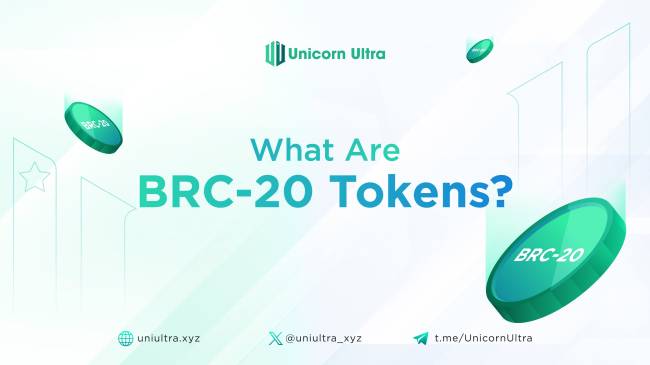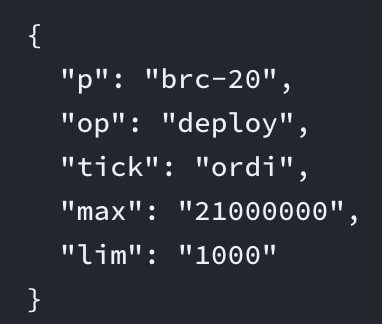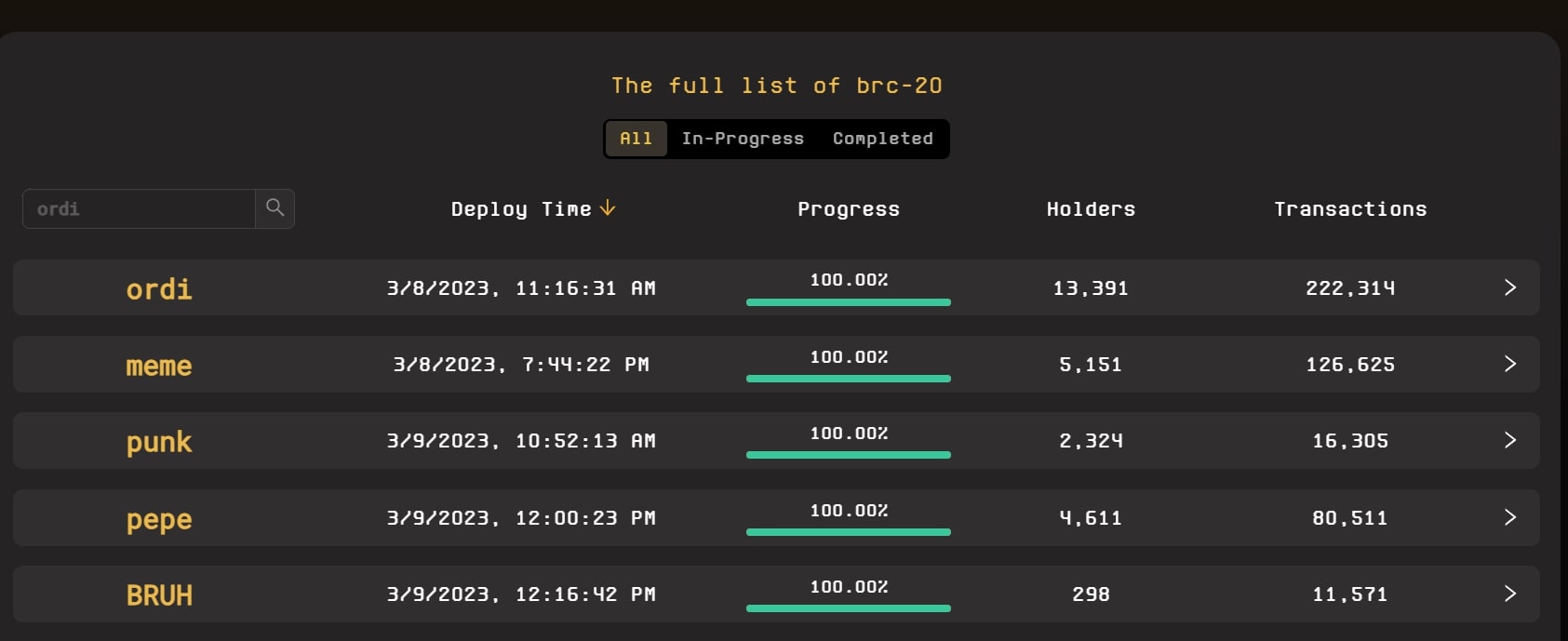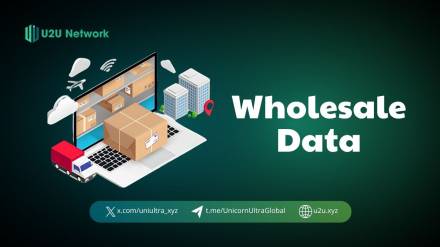This article provides an in-depth look at BRC-20 tokens, exploring their origins, functionality, advantages, limitations, and potential impact on the digital asset space.

What are BRC-20 Tokens?
BRC-20 tokens are fungible digital assets created on the Bitcoin blockchain. These tokens are unique because they are inscribed directly onto Bitcoin's satoshis using JSON code, making them distinct from traditional tokens on platforms like Ethereum. The BRC-20 standard offers a new way to utilize Bitcoin, allowing for the creation and transfer of tokens within the Bitcoin ecosystem.
Learn more: What are Token Standards and how do they work?
To generate BRC-20 tokens, a person needs to start by crafting a script file that holds vital information about the token. This info includes details like the token’s name, symbol, and total supply. After that, they need to put the necessary amount of Bitcoin into a special address on the bitcoin blockchain, which goes by the name “ordinals registry.”

Origin and Development of BRC-20 Tokens
The BRC-20 token standard was created in early March 2023 by Domo, an enigmatic blockchain analyst. Nevertheless, the genesis of BRC-20 tokens can be traced back to Bitcoin's Taproot upgrade in November 2021, which increased the data capacity within Bitcoin blocks. This upgrade paved the way for the development of the Bitcoin Ordinals protocol, which enabled the inscription of information onto individual satoshis.
Utilizing this protocol, BRC-20 tokens are inscribed with JSON data, providing additional functionalities like token deployment, minting, and transfer on the Bitcoin network. The standard supports the creation and transfer of fungible tokens via the ordinals protocol. Ordi, Vmpx and Pepe are examples of popular tokens on the BRC-20 token list.

BRC-20 vs. ERC-20: Key Differences
While BRC-20 tokens draw inspiration from Ethereum's ERC-20 tokens, there are significant differences in their design and functionality:
- Blockchain Platform: BRC-20 tokens operate on the Bitcoin blockchain, whereas ERC-20 tokens are native to Ethereum.
- Creation Method: ERC-20 tokens are created through smart contract code, while BRC-20 tokens use JSON files inscribed on satoshis.
- Operational Mode: BRC-20 tokens operate parallel to Bitcoin’s blockchain, meaning transactions can be accepted on Bitcoin’s network but rejected on the BRC-20 protocol if they don’t meet the inscribed conditions.
Advantages of BRC-20 Tokens
- Compatibility with Bitcoin: Leveraging the established infrastructure and security of the Bitcoin network.
- Simplicity: Easier creation process compared to other token standards requiring complex smart contracts.
- Security: Enhanced security due to the robustness of the Bitcoin blockchain.
Limitations of BRC-20 Tokens
- Lack of Smart Contract Functionality: This limits the scope of applications compared to other token standards.
- Dependency on Bitcoin Blockchain: Subject to Bitcoin’s inherent limitations like lower scalability and slower transaction speeds.
- Limited Interoperability and Utility: Challenges in interacting with other blockchain systems and limitations in complex tokenization needs.
Potential Use Cases for BRC-20 Tokens
- P2P Transfers: Efficient transfers between wallets on the Bitcoin network.
- DeFi Applications: Potential to create BTC-based finance protocols and decentralized exchanges.
- Tokenization of Assets: Tokenizing real-world assets like gold or real estate.
The Growth and Impact of BRC-20 Tokens
For what began as an ‘experiment,’ BRC-20 tokens have exploded in popularity. Not only have over 14,000 tokens been created using this technology, these tokens have surpassed a cumulative market capitalization of $600 million and are still going strong at the time of writing. It has enjoyed a good reception from cryptocurrency enthusiasts; this is largely thanks to the reputation and popularity of the Bitcoin network on which they run.
However, behind the fame and financial viability, BRC-20 transactions have added more stress to the Bitcoin blockchain. Bitcoin network’s 7 TPS (Transactions Per Second) speed has since been overwhelmed by tons of transactions related to BRC-20 and ordinal NFTs. On May 8th 2023, the Bitcoin network reportedly had over 300,000 transactions in the queue as transaction fees rose to 2 year record highs of over $30 as seen in the chart below.

Purchasing and Storing BRC-20 Tokens
BRC-20 tokens can be purchased on centralized exchanges or through ordinals exchanges using a taproot-enabled BTC wallet. Notably, these tokens cannot be stored on wallets like MetaMask and require specific wallets that support the Bitcoin network and Bitcoin ordinals.
Conclusion
BRC-20 tokens have introduced an innovative dimension to the Bitcoin blockchain, offering new possibilities for tokenization and decentralized applications. While they bring unique advantages, they also face limitations in smart contract functionality and interoperability.
The ongoing development and growing interest in BRC-20 tokens indicate their potential to significantly impact the digital asset space, positioning Bitcoin as not just a cryptocurrency but also a platform for diverse tokenized assets and applications.



.png)


